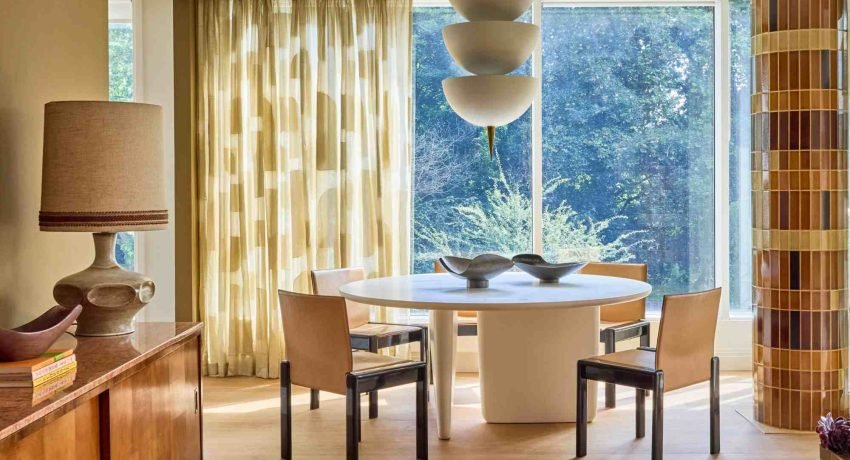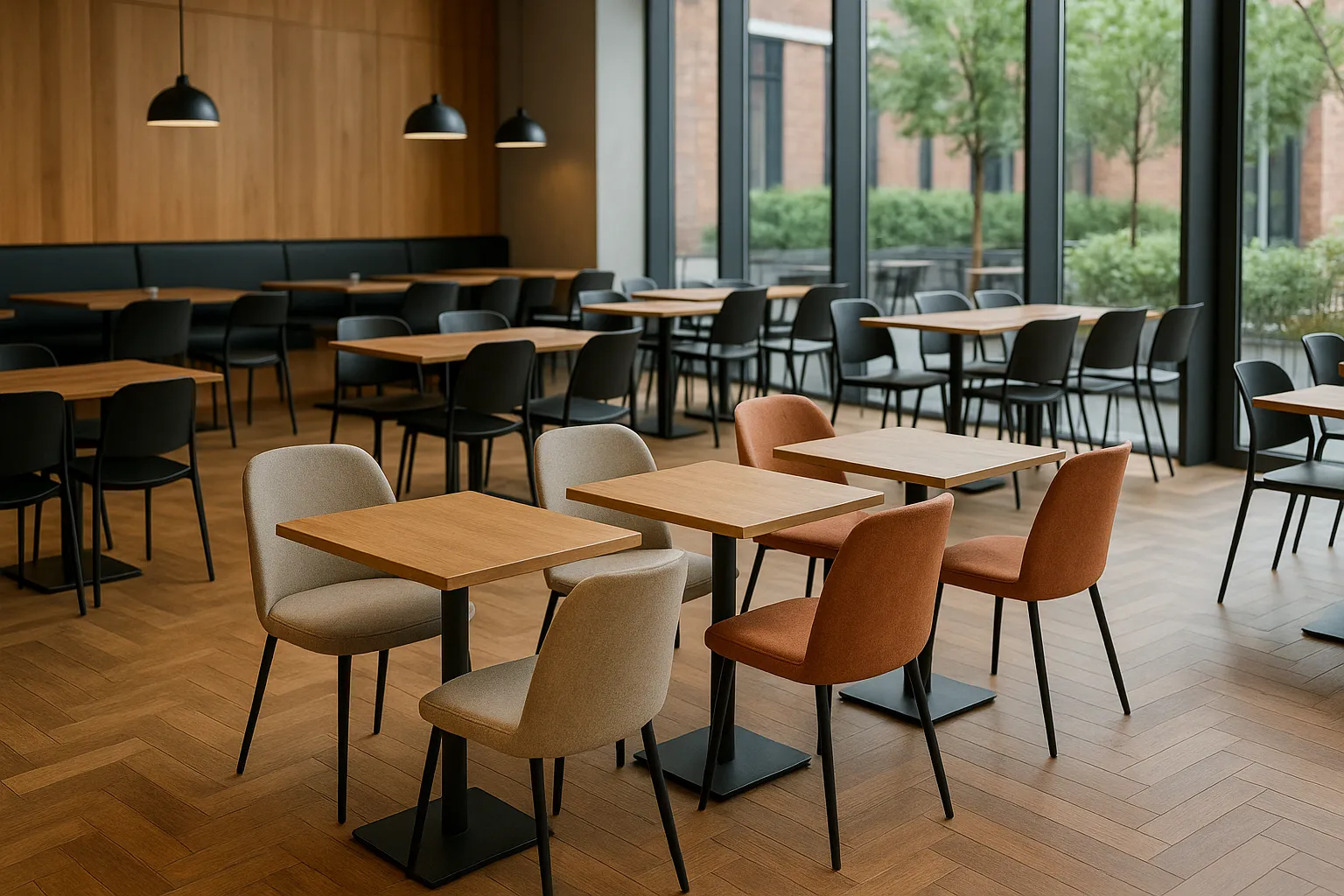Introduction
Interior columns have long symbolized elegance and strength in architectural design. Today, they do much more than support structures—they define spaces, enhance décor, and serve as stunning visual focal points. If you’re considering updating your home or designing from scratch, understanding the variety of Interior Columns Design Ideas will help you achieve both style and functionality.
This comprehensive guide explores how to use columns to add depth, texture, and sophistication to your interiors. Whether your goal is classic grandeur or modern minimalism, this article offers everything you need to know about incorporating columns beautifully into your home.
The Importance of Interior Columns in Design
Interior columns are more than decorative details. They play a key role in shaping open spaces, adding vertical interest, and creating a sense of rhythm within a room. When thoughtfully placed, they can define areas like dining and living zones without the need for solid walls, maintaining openness and flow.
Columns can also help correct architectural imbalances. For instance, in rooms with high ceilings or large open plans, columns bring proportion and visual grounding. Whether structural or purely decorative, they elevate your home’s aesthetics instantly.
Understanding Different Interior Column Styles
Classical Columns: Timeless Beauty
Classic styles such as Doric, Ionic, and Corinthian remain popular for their timeless appeal. These ancient Greek and Roman designs feature intricate fluting, detailed capitals, and a sense of grandeur. Incorporating classical columns in entryways or living rooms adds a sense of sophistication reminiscent of historical architecture.
Modern Columns: Sleek and Minimal
For contemporary homes, modern columns focus on simplicity and clean lines. Materials like steel, glass, and concrete dominate this category. Minimalist columns can subtly separate spaces without overwhelming them. They work exceptionally well in open-plan lofts or industrial-inspired interiors.
Rustic and Farmhouse Columns: Warm and Inviting
Wooden columns with visible grain and texture bring a cozy, rustic charm. Beams or reclaimed wood columns complement farmhouse and cottage-style homes perfectly. They introduce warmth and authenticity, blending seamlessly with natural décor elements like stone fireplaces and wood floors.
Transitional Columns: Balancing Old and New
Transitional designs merge classic and modern elements. Smooth columns with subtle detailing or neutral colors suit homes seeking balance. They maintain traditional form but with contemporary finishes, creating harmony in mixed-style interiors.
Materials Used in Interior Column Design
Wood Columns
Wood remains a favorite for its versatility and warmth. From dark mahogany to light oak, wood columns can be stained or painted to match any décor. They are ideal for adding texture and character to living or dining spaces.
Stone and Marble Columns
Stone and marble columns exude luxury and permanence. Their natural veining and smooth finishes make them perfect for grand entryways or formal spaces. Although heavier and costlier, they deliver a statement of elegance unmatched by other materials.
Metal Columns
Sleek metal columns—often made from steel or aluminum—fit beautifully in modern interiors. They can be painted, polished, or left raw for an industrial feel. Their durability makes them ideal for both structural and decorative purposes.
Gypsum and Fiberglass Columns
Lightweight and cost-effective, these materials mimic traditional stone or marble without the weight. They are easy to install and maintain, making them popular in contemporary residential settings.
Placement and Functionality of Interior Columns
Interior columns can transform how a space feels and functions. Their placement determines whether they act as focal points or subtle dividers.
Defining Open Spaces
In open-plan layouts, columns are used to visually separate functional zones. For example, they can mark the transition between a kitchen and dining area while preserving openness and light flow.
Enhancing Entrances
Placing columns at entry points, like hallways or foyer areas, establishes a grand first impression. This architectural feature draws the eye upward, emphasizing height and elegance.
Framing Features
Columns can frame fireplaces, staircases, or large windows, enhancing symmetry and focus. This framing technique works especially well in traditional or luxurious home designs.
Supporting Beams and Arches
In many homes, columns serve a structural purpose by supporting beams or arches. Even when functional, they can be styled creatively to complement surrounding décor.
Popular Interior Columns Design Ideas
One trending concept in modern homes is blending form and function. For instance, pairing Interior Columns Design Ideas with lighting—like recessed LED strips—can make a dramatic visual statement. Painted or textured columns also allow homeowners to showcase personality through color and finish.
You can explore a complete Interior Columns Design Ideas Guide to get deeper inspiration for choosing the perfect type, style, and finish for your home.
Painted columns in bold hues can act as accent pieces, while those in neutral tones contribute to a cohesive look. Additionally, incorporating decorative moldings or textures adds visual depth, enhancing your space’s architectural charm.
Creative Ways to Decorate Columns
Columns should never look like afterthoughts. With a few creative touches, you can make them key design elements.
Integrate Shelving or Art
Turn columns into functional art by adding built-in shelves or displaying sculptures. This approach works well in hallways or living areas where you want to maximize visual impact.
Add Lighting Features
Illuminated columns can create ambiance and drama. Recessed lights or sconces installed along the column surface emphasize texture and form beautifully during evenings.
Use Contrasting Colors or Textures
Painting columns in a shade that contrasts with the walls draws attention. Alternatively, wrapping them in natural materials like wood veneer or stone tiles adds depth and tactile interest.
Mirror or Glass Finishes
For smaller spaces, mirrored or glass columns help reflect light and create a sense of spaciousness. These reflective surfaces blend perfectly in modern interiors with minimalist aesthetics.
Mistakes to Avoid in Column Design
While columns are visually appealing, improper planning can disrupt flow and proportion. Avoid oversizing them in small rooms or using styles that clash with your interior theme. Over-decorating or using mismatched materials can also distract from the overall harmony of your space. Always consider balance—columns should complement, not compete, with other design elements.
Expert Tips for Choosing the Right Column Design
When selecting a column design, start by assessing your home’s architecture. Choose materials that harmonize with existing textures and finishes. Always factor in ceiling height, room size, and lighting. For modern spaces, go for sleek lines; for traditional homes, opt for detailed capitals or fluted shafts.
If you’re unsure, consult a professional designer or architect for tailored advice. They can help you achieve a seamless balance between aesthetics and practicality. For more insights and inspiration, visit Interior Columns Design Ideas for detailed examples and expert recommendations.
FAQs
What are the best materials for interior columns?
The best materials depend on your style and budget. Wood, marble, and metal are top choices due to their durability and aesthetic appeal.
How do I decorate interior columns in my living room?
You can paint, light, or wrap them with textured materials. Adding decorative trim or lighting enhances visual interest without overwhelming the space.
Are interior columns structural or decorative?
They can be either. Structural columns support loads, while decorative ones add beauty and definition. Some designs serve both functions seamlessly.
Can I install columns in small rooms?
Yes, but use slim and simple designs. Overly large columns can crowd small spaces, disrupting proportion and flow.
How can columns enhance open-concept layouts?
Columns define areas like dining and living spaces without walls. They maintain openness while adding architectural rhythm and elegance.
Interior columns are timeless architectural features that blend strength and style. When thoughtfully designed, they can redefine your interiors—adding structure, depth, and personality. Whether you prefer classical marble columns or sleek modern steel designs, these elements have the power to transform any room.
To discover more professional insights and ideas tailored to your space, explore the Interior Columns Design Ideas Guide. Learn how to choose the right materials, placement, and finishes to elevate your home’s design effortlessly. For broader architectural knowledge and history, visit Wikipedia for an overview of column evolution in design.









